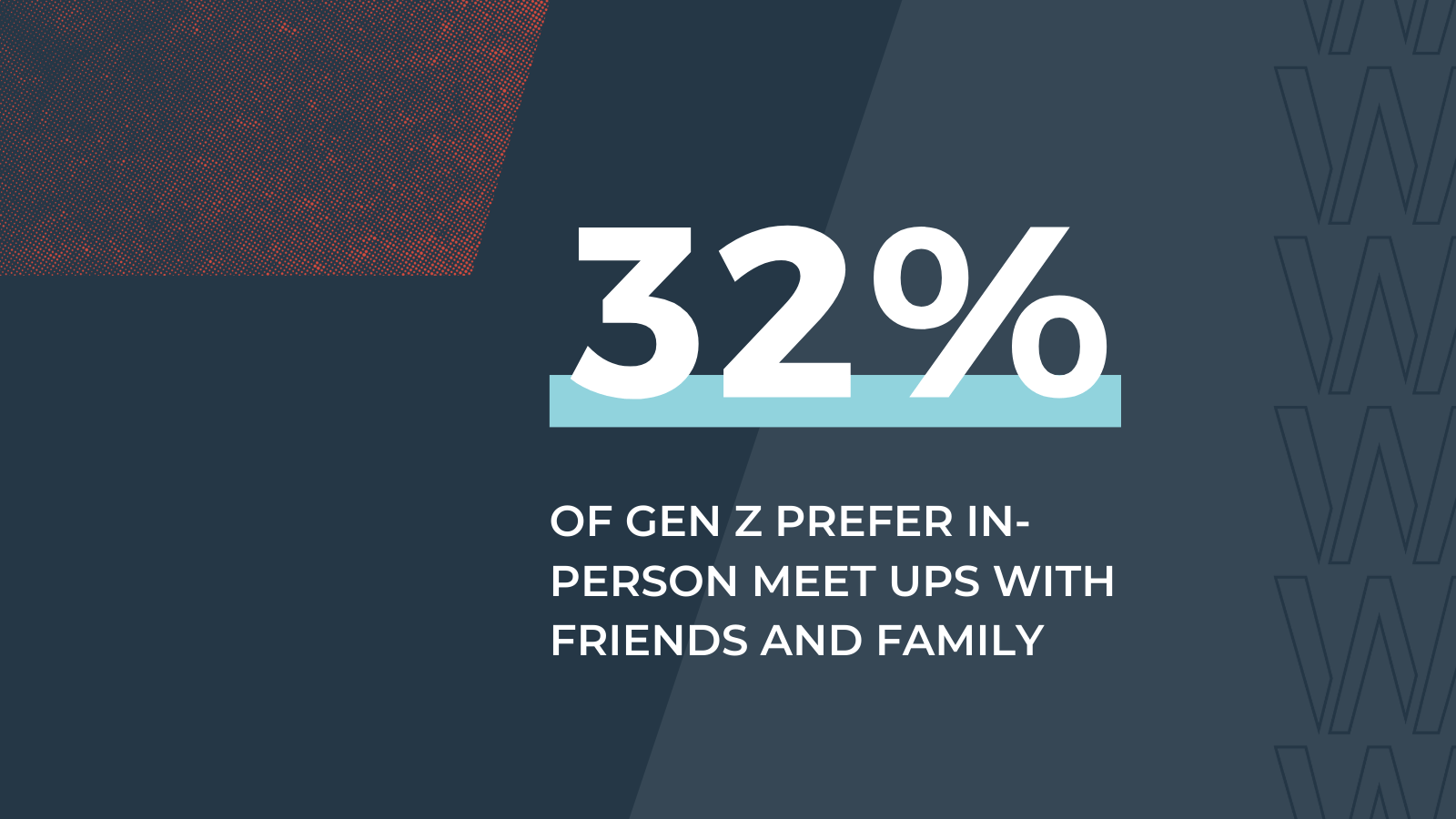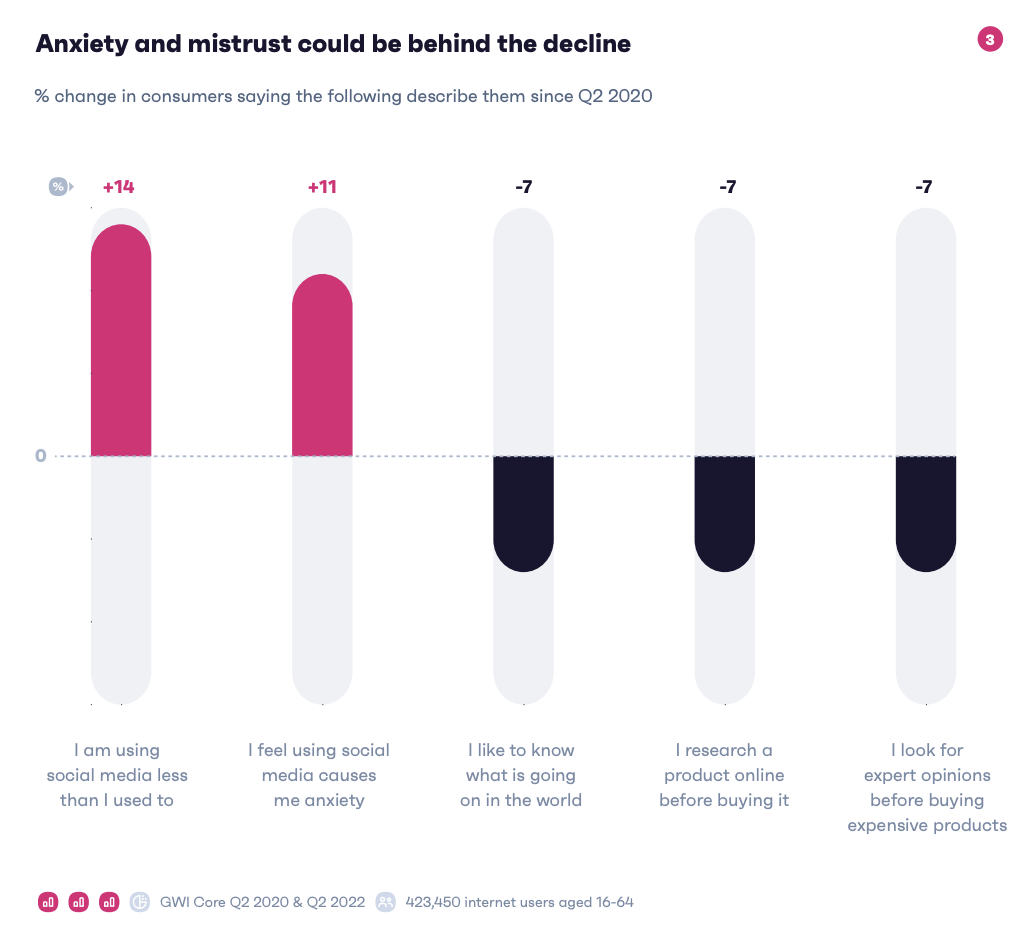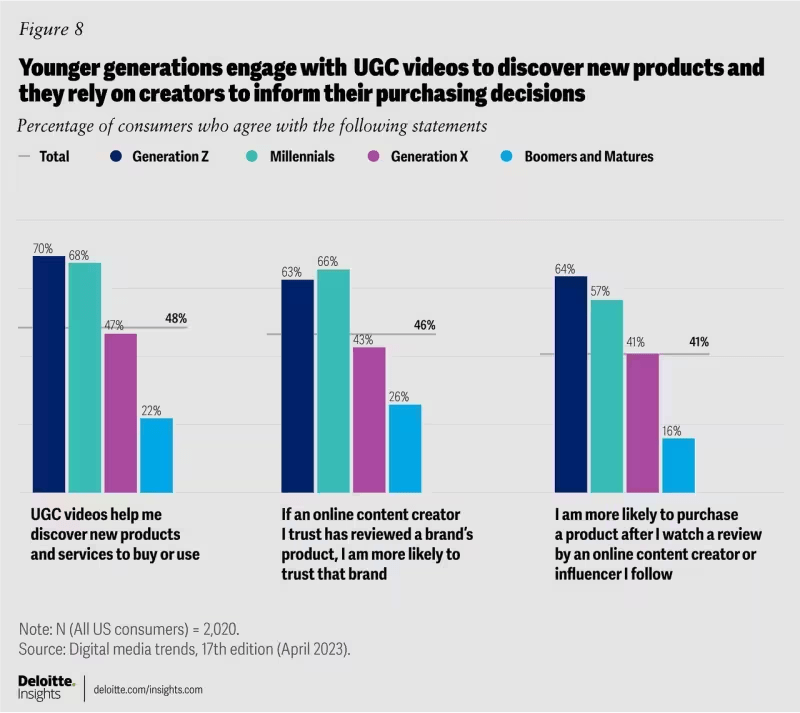Gen Z has never had to wait for dial-up internet or use a payphone to call home. Because this cohort of consumers grew up with the internet, marketers tend to approach Gen Z as chronically online, tech-fluent, and social media-obsessed. But that simplistic approach could give you a skewed perception of the complexities of this emerging generation.
Today’s young adults have an entirely different relationship with technology than older generations, and they might not be as in love with the online world as many marketers assume. To connect with Gen Z, you need to understand how the technology-packed world they grew up in affects how they interact with media and marketing both on- and offline.
Your brand might be looking at these new kids on the block all wrong. To connect with Gen Z, you need to understand how the technology-packed world they grew up in affects how they interact with media and marketing both on- and offline.
Gen Z isn’t as tech-savvy as marketers assume
For those born in the late 90s and early 2000s, the internet has always been an essential part of their lives. Instead of learning to type and spending hours building rudimentary websites and profiles on early social media websites like MySpace, Gen Z grew up in a fully formed online world.
They didn’t need computer classes to learn how to use technology; they were born into it. Since technology has always been a mainstay of their lives, online life is as natural as offline life. Goldman Sachs reports that nearly half of Gen Z spends up to ten hours online every day—so it’s hard not to get the impression of a generation destined to spend its whole life online.
Why the “digital native” label can be misleading
What many brands fail to recognize is that there’s a difference between being tech-native and being tech-savvy. Having access to social media and smartphones from a young age doesn’t automatically make Gen Z the generation of super-plugged-in tech savants that many marketers assume they are.
Sure, they’re a constant presence on social media, but they’re also extremely aware of the negatives of spending too much time online. They have a different relationship to technology than older generations, and that doesn’t always mean they’re more committed to it. They’re not indiscriminate in their appetite for tech, and they have no problem casting aside platforms and technologies that no longer give them what they want.
If your brand wants to connect to Gen Z consumers, it’s time to rethink your image of the generation. Companies that are still assuming young adult consumers are always into cutting-edge digital and are only reachable online are giving up other opportunities to connect with them.
The generation gap in tech usage and understanding
The differences are most obvious on social media. Gen Z overwhelmingly chooses video-centered platforms like TikTok and YouTube, in contrast to millennials and older generations, who still tend to be most active on Instagram and Facebook.
Another surprising finding from a recent study is that Gen Z may actually be less tech-savvy than millennials, especially when it comes to workplace tech skills. A lifetime of using consumer tech hasn’t necessarily translated into a deep facility with technology in general (at least, not the kind that millennials got from coding their MySpace pages).
When Gen Z goes offline
Many members of the first tech-native generation are looking for ways to detach from the internet and find connection and joy offline. When brands explore these offline spaces, they can find receptive customers in Gen Z.
How often does Gen Z unplug?
A lot of Gen Zers are rejecting the culture of constant screen time and seeking likes. GWI found that they’re actively trying to limit their screen time and using social media less than before.
Some members of Gen Z have even opted for so-called dumb or feature phones (e.g. traditional flip or slide phones that have additional features like GPS or a hotspot), rejecting smartphones and all the screentime that comes with them. There are even specific brands, like Punkt, Light, and Nokia’s parent company HMD Global, that are creating feature phones specifically for this market.
What are Gen Z consumers looking for instead? A more authentic connection. According to research from CommBank, 32% said that they much prefer to meet with friends or family in person over texting or calling. “Digital detoxing,” a practice of intentionally taking a break from devices for a set period of time, has also taken off with some Gen Z tech users. The takeaway: If you’re depending exclusively on social media to connect with Gen Z customers, you might need to branch out.

Source: CommBank
Why Gen Z values digital detoxes and offline experiences
Anxiety and mistrust surrounding social media and online platforms have soared among younger consumers. In addition to using social media less, many Gen Z consumers are less engaged with news and even online reviews.

Source: GWI
Mental health is one factor. As the generation most likely to discuss mental health concerns, the youngest adults are concerned about social media’s potential to cause anxiety and depression, and many are eager to disconnect. A Spotify survey found that 61% of Gen Z reported they’re lonelier now than they were 10 years ago.
In their search for authenticity, Gen Z has also come back to live experiences and offline connections. The same Spotify survey found live music and live podcast tapings surging in popularity among Gen Z. It’s not hard to see a connection between a growing distrust of the digital world and a resurgence of in-person activities.

Source: WSJ
How to market to Gen Z without overwhelming them
Gen Z might be experimenting with unplugging, but that doesn’t make them a generation of Luddites. They’re still online—they just have different attitudes and interests. So, where does that leave marketers who are trying to reach a generation that now commands $450 billion in buying power?
For starters, you need to reach Gen Z where they are when it comes to tech. That starts with considering your specific audience, where they are, and how they relate to technology, not just to a channel, your brand, or a specific product, but technology itself.
Again, most Gen Zers will never go completely off the grid. So they’re reachable, just in different ways than you might think. If you look to better define specific Gen Z audience segments (instead of assuming everyone from ages 18-27 is exactly the same), you’ll be able to generate valuable insights into the channels, creative, and messaging that will appeal to those cohorts.
Share your brand’s values authentically
A survey by the PR firm APCO found that 80% of Gen Z consumers believe a company should take a stand on public issues, with mental health, healthcare access, and gender equality topping the list. While not all companies might be comfortable putting their name on political statements, think about what your customers care about and how you can meet them on their turf.
If your Gen Z audience is focused on mental health (and potentially worried about the effect of screen time), how can you provide some respite? How can you appeal to many Gen Zers’ interest in disconnecting? Whether that’s through a specific product, or by creating ads that feature soothing colors, a list of ways to unplug, or even just the right messaging and tone, your brand will be much more likely to not just reach but connect with Gen Z audiences.
Optimize for mobile platforms
Gen Z is also a mobile-first generation. Many younger customers access online content primarily through their smartphones, so if your site looks terrible on a mobile device, you could be losing Gen Z customers before they even have a chance to see your offerings.
To make sure your content is primed for mobile browsing by Gen Z:
- Understand page experience fundamentals to set your site up for success
- Consider mobile-first design, which starts with the mobile site before a desktop version
- Compress images and use a content delivery network (CDN) to speed up page loading
- Add subtitles to videos to make them easy to watch for users scrolling with the sound off
Keep your messaging short and focused
It’s also easy to lose Gen Z’s attention if you take too long to make your point. That’s why the brands with the best Gen Z social media game make “get in, get out” a mantra. Here’s how to trim your messaging to make it more appealing to a rapid-fire attention span:
- Invest in platforms based around short-form content like TikTok and Snapchat
- Tell your story in the shortest span possible–under two minutes is good, under one minute is better
- Consider hiring professional video production help to keep your short-form videos snappy and engaging
Build trust through influencers and micro-influencers
You should also take behavioral insights into account lower in the funnel. According to Deloitte, Gen Z is more likely to take product recommendations from user-generated content (UGC).
They’re looking for a human connection, not just a product shot or list of features. Partnering with creators and influencers can help fill that need, but so can featuring your own Gen Z employees in posts, ads, or videos, or sourcing UGC to create a two-way conversation between your brand and your audiences.

Source: Deloitte
Avoid digital fatigue by balancing online and offline touchpoints
Finally, don’t forget about offline opportunities. Even though Gen Z mostly shops online, brick-and-mortar touchpoints have real power, especially for the generation that largely came into adulthood or adolescence during the pandemic.
You can leverage your digital channels to find new ways to ultimately get to know them live and in person. If what they’re looking for are opportunities to get offline, how can your brand help fill that need? Do you have brick-and-mortar stores where you could host events aimed at Gen Z customers and offer them a special experience?
Get creative even if you don’t have IRL stores: could you set up specific scavenger hunts in different cities that give consumers the chance to go outside and interact with your brand in new ways? According to a survey by MG2 and Berns Communications Group’s The Z Suite, 49% of 18-26-year-old consumers shopping mainly online would also like to attend experiential pop-up activations.
View this post on Instagram
It’s also worth noting that just because a significant chunk of Gen Z is tech-skeptical doesn’t mean that they aren’t willing to experiment with hybrid digital/IRL experiences. In fact, in the same survey, 60% of Gen Zers who shop primarily online want to engage with augmented reality in stores. You have the opportunity to get creative about how to combine those elements, whether that’s through in-store digital ads, TikTok’s DOOH offering, or something more bespoke.
More than any generation before them, Gen Z experiences the online world (the good, the bad, and the ugly) as seamlessly integrated into their offline lives. To connect with them, your brand experience should reflect that fluidity, and recognize the paradox behind it.







Responses